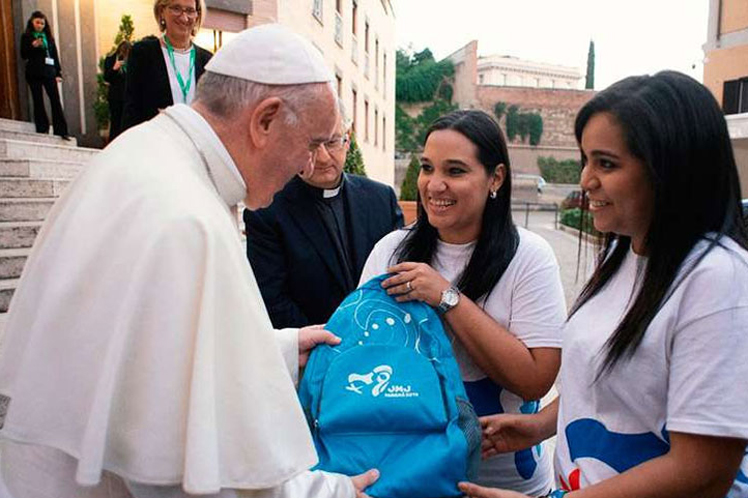Roman style, the cedar wooden chair will be upholstered in White in its back, the seat and arms, besides having a triangular upholstery and two triangular tongues, where there are the shields of the Vatican and that of Francis.
Although the original design came from Spain, the concept of the furniture suffered some modifications, related to the comfort of his Sanctity and the religious building, constructed at the end of the 17th century and recently restored at a cost of 12 million dollars, after two years of intense work.
The chair cost some 20 thousand dollars, of which amount, some eight thousand dollars came from donations by residents of El Chorrillo, neighborhood devastated during the U.S. invasion of 1989.
Other media are platforms to offer public masses, the pontificial baton and the ‘popemobile’, designed and manufactured by Tri9-Star Centroamerica and David Distributor which donated the SUV of double cabin and automatic transmission, with all specifications of security and comfort asked by the Vatican.
The Pope’s agenda highlights the approach to sick and marginal youths. The program also includes a meeting with the president of the Republic, Juan Carlos Varela, government authorities, diplomatic corps, civil society and over 70 Central American bishops.
As for the places the successor of Peter is to visit, there is the Correctional Center of Minors in Las Garzas de Pacora, where youths deprived of liberty will share the penitential liturgy besides giving the Pope drawings made from the inmates.
After the massively attended mass of Sunday January 27, Rome’s Bishop will visit the house Good Samaritan that shelters HIV-Aids patients lacking resources to face their condition.
It is expected that the Pope’s masses will be attended by pilgrims, religious, politicians and journalists from the world over
